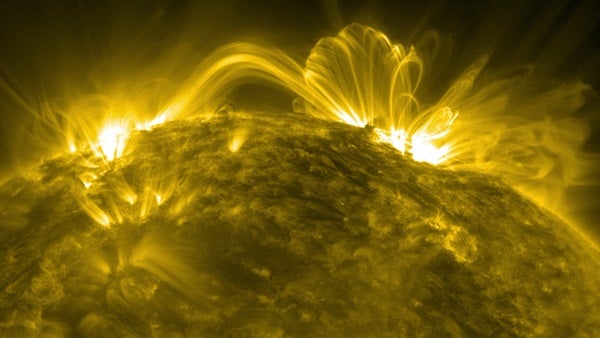Alexander James decided to study the Sun when he was a graduate student at the University of Southhampton in the U.K. His reasoning was simple: “I wanted to do something that would have a direct impact and application to helping society,” he says.
James, 29, went on to complete his Ph.D. at University College London, and he is currently a solar physicist at the European Space Astronomy Centre in Madrid, Spain. He focuses on figuring out what causes the massive eruptions of charged particles known as coronal mass ejections (CMEs) to lift off the Sun.
When strong CMEs strike Earth’s magnetic field, they can induce currents in power lines capable of destroying transformers — which happened in Quebec on March 13, 1989. But currently, there are no reliable models that can predict when a CME will happen. “We see one headed towards us and we only have the time before it arrives” — as little as hours — “to begin to decipher whether it’s going to cause us any problems,” says James.
In a 2018 study, James and his colleagues tackled archival data of a June 2012 CME that caused a moderate geomagnetic storm. Their analysis confirmed that a massive twist of magnetic fields known as a flux rope formed in the Sun’s corona a few hours before the eruption. When flux ropes reach a critical height, they can become unstable, which can lead to CMEs.
“A lot of the flux ropes that have been studied formed at lower heights, but the 2012 flux rope formed at a remarkably higher altitude in the corona,” James says.
His current work includes modeling how this critical height varies across active regions of the corona over time. James hopes this will help to quantify the chances of CMEs happening and eventually produce a “five-day forecast of CMEs” to give us time to prepare.
“Alex digs hard to find the right evidence, and he is really honest with himself and everyone about what can and can’t be answered,” says David Williams, the instrument operations scientist for the European Space Agency’s Solar Orbiter mission. Those qualities, he says, are “vital if we’re going to give ourselves a fighting chance” of improving our ability to predict space weather.
Beyond the practical benefits of studying the Sun, James also appreciates how unique it is as an astronomical target. “I think it’s fascinating that we can study a star so close with high-resolution instruments to learn so much about it,” he says.
Make sure to explore our full list of 25 rising stars in astronomy. Check back each week for a new profile!
To get the latest astronomical news and observing content delivered directly to your door, subscribe to Astronomy magazine today!











